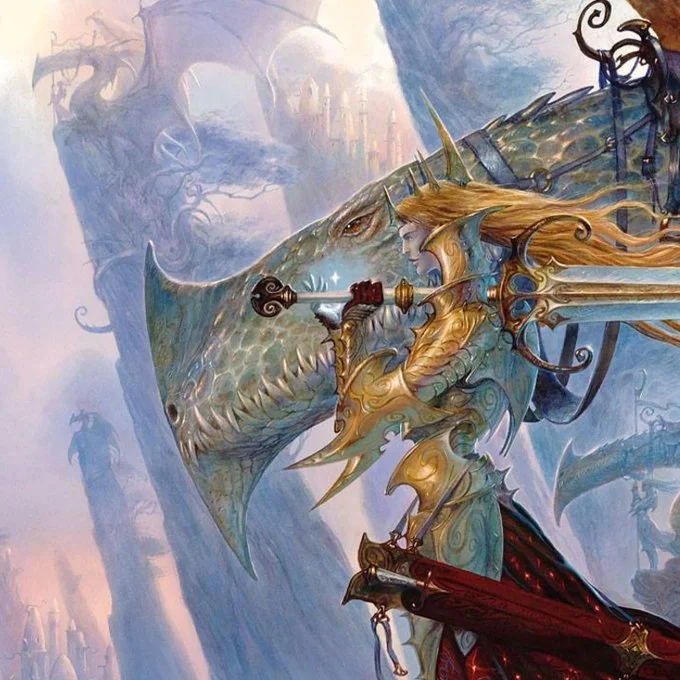The Metal Art of John Howe
No few artists have been inspired by JRR Tolkien’s masterpiece, The Lord of the Rings, but only a few can honestly say that they’ve inspired Tolkien’s books and film adaptations in turn.
Like Alan Lee, who we’ve previously discussed, John Howe’s work is scattered throughout the European-folklore fantasy world. Also like Lee, he’s responsible for some of the most enduring thematic images of the 2000s' Lord of the Rings film trilogy. But what sets him apart from the pack?
Background: A Smooth Transition
John Howe is among the most prolific and influential fantasy artists of all time, and for long-time fans of fantasy art, he might not need much of an introduction. But unlike Viggo Mortenson and other icons of fantasy, concept artists rarely have much sway with laypeople.
From all of the publicly available information on Howe, his early life was pleasant and uneventful. Born in Canada in the late 50s, he happened into an unprecedented period of peace and prosperity in Noth America, giving him ample time to hone his drawing skills. Because he had trouble registering for classes in high school, he mostly taught himself painting and drawing by copying calendars and book covers.
By late adolescence, Howe was skilled enough to head to France to study art. In a few short years, he was doing commissions for political cartoons, magazine illustrations, comics, and other minor projects. Sadly for the sake of this blog’s word count but happily for Howe, his transition to fame was nothing if not smooth, and the caliber of his commissions steadily increased until he had developed into one of the most sought-after concept artists in the western world.
Recognizable Projects
Howe’s resume is almost absurdly strong, and nearly everyone with eyes is likely to recognize at least a few of his works. Even if you’ve been living under a rock and you’ve never heard of series books like Game of Thrones or LOTR, you surely know The Chronicles of Narnia. And your English teacher likely forced you to open a copy of Beowulf at least once, even if you skim-read it, no?
Such ubiquitous books and films often have many consulting illustrators and art directors, but John Howe seems to have won himself at least a handful of enduring covers.
If you grew up in the ‘90s or early ‘00s and, like me, you ate your share of knuckle sandwiches, there’s a good chance you copped yourself at least one deck of Magic: The Gathering cards. Here too, John Howe has left his mark, and some of the most enjoyable, dynamic creature sketches are his.
Visual Style
John Howe is so prolific that his work virtually defies adjectives to describe it. But I’ll try anyway, if merely to justify its place on our website.
Compared with Alan Lee, he tends to stick less rigidly to realistic proportions. Instead, he prefers stylized, iconic overemphasis. Some figures and scenes, such as that of the wraith-king below, are intensely dark. Others are more comedic or wistful.
Generally, Howe prefers creatures and figures inhabiting scenes over mere scenery. When he devotes special energy to scenery, it, like the creatures and people populating his worlds, tends to be exaggerated.
And without further discussion, I’ll let you gaze into some of these mesmerizing paintings and drawings. If you’d like to read something as epic as these images, check out The Elder Wyrm, a retro fantasy novel inspired by the fantasy art and music of Howe and his contemporaries,









